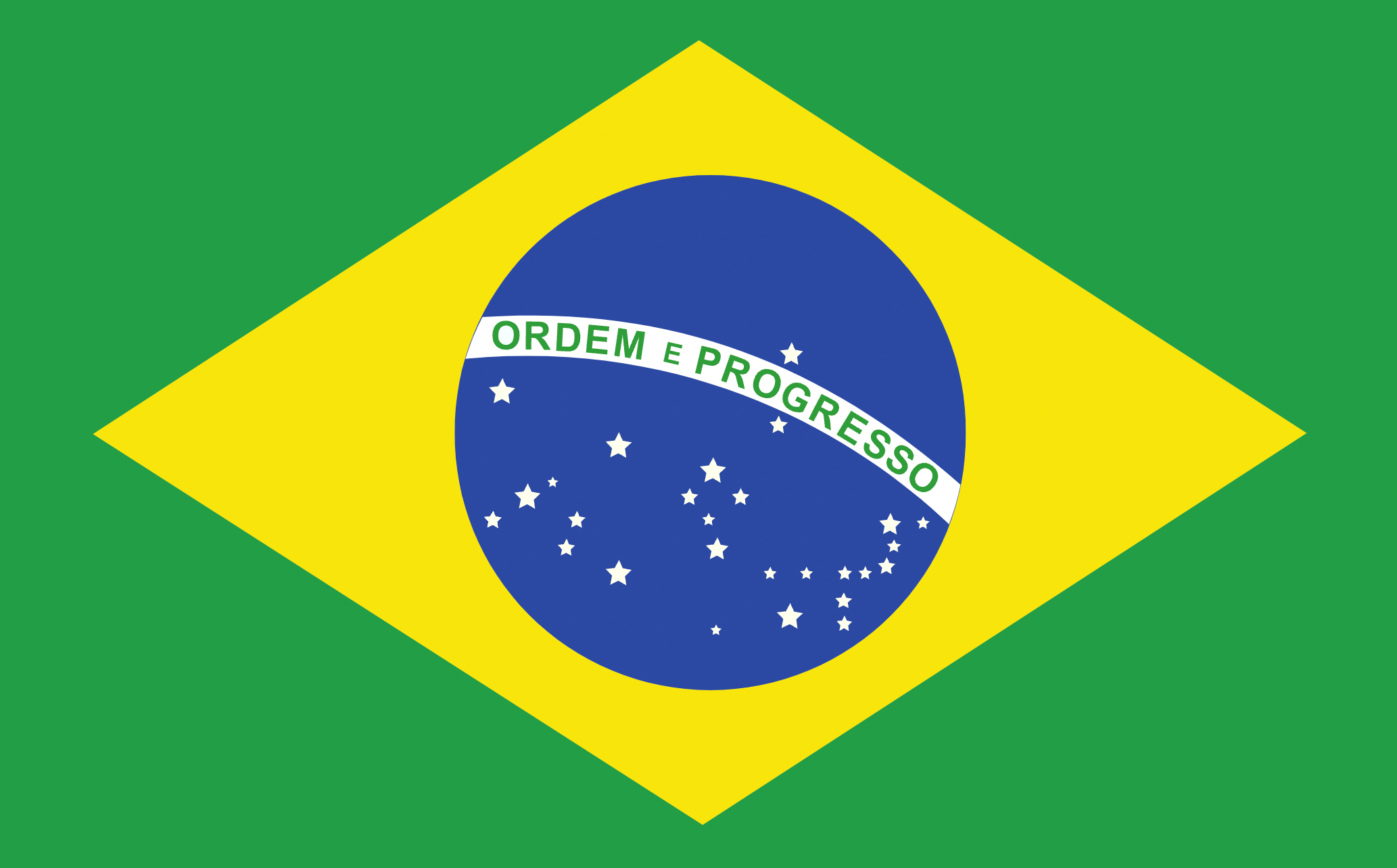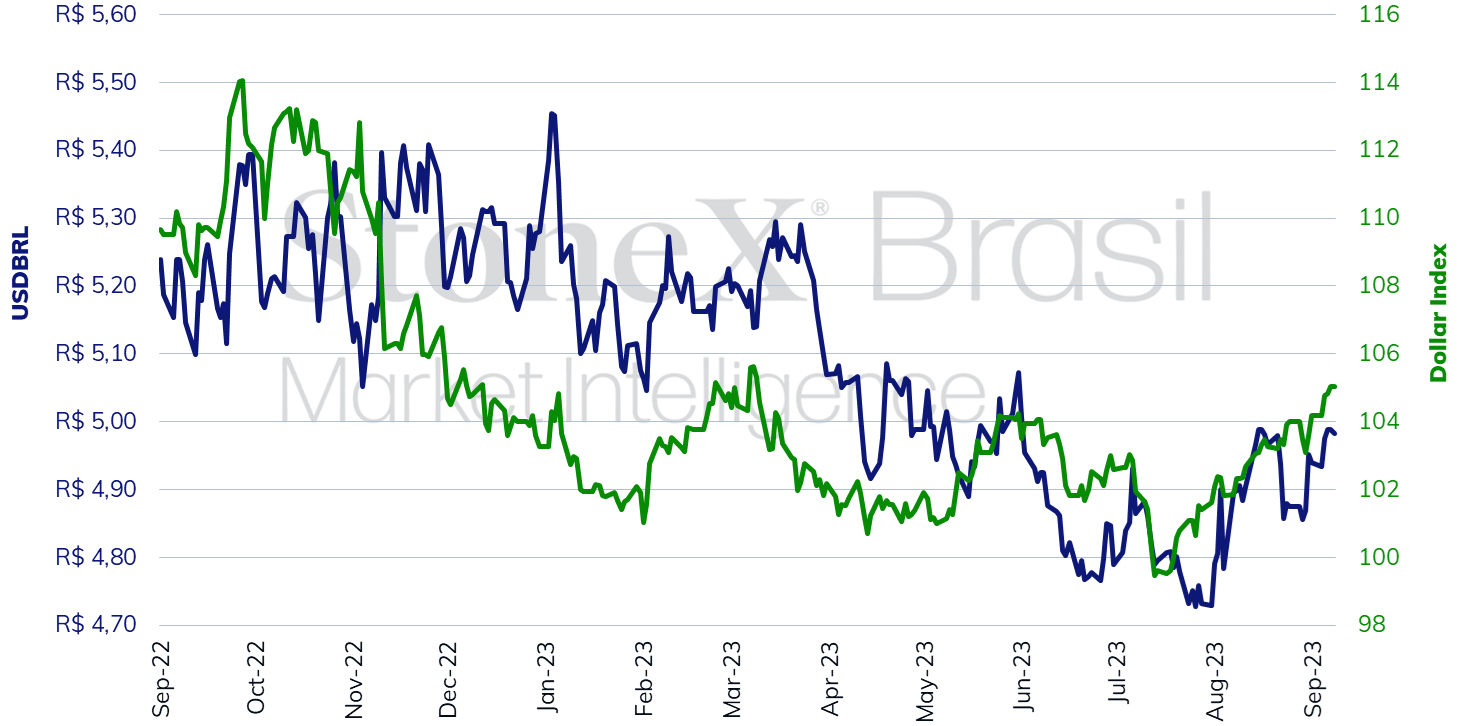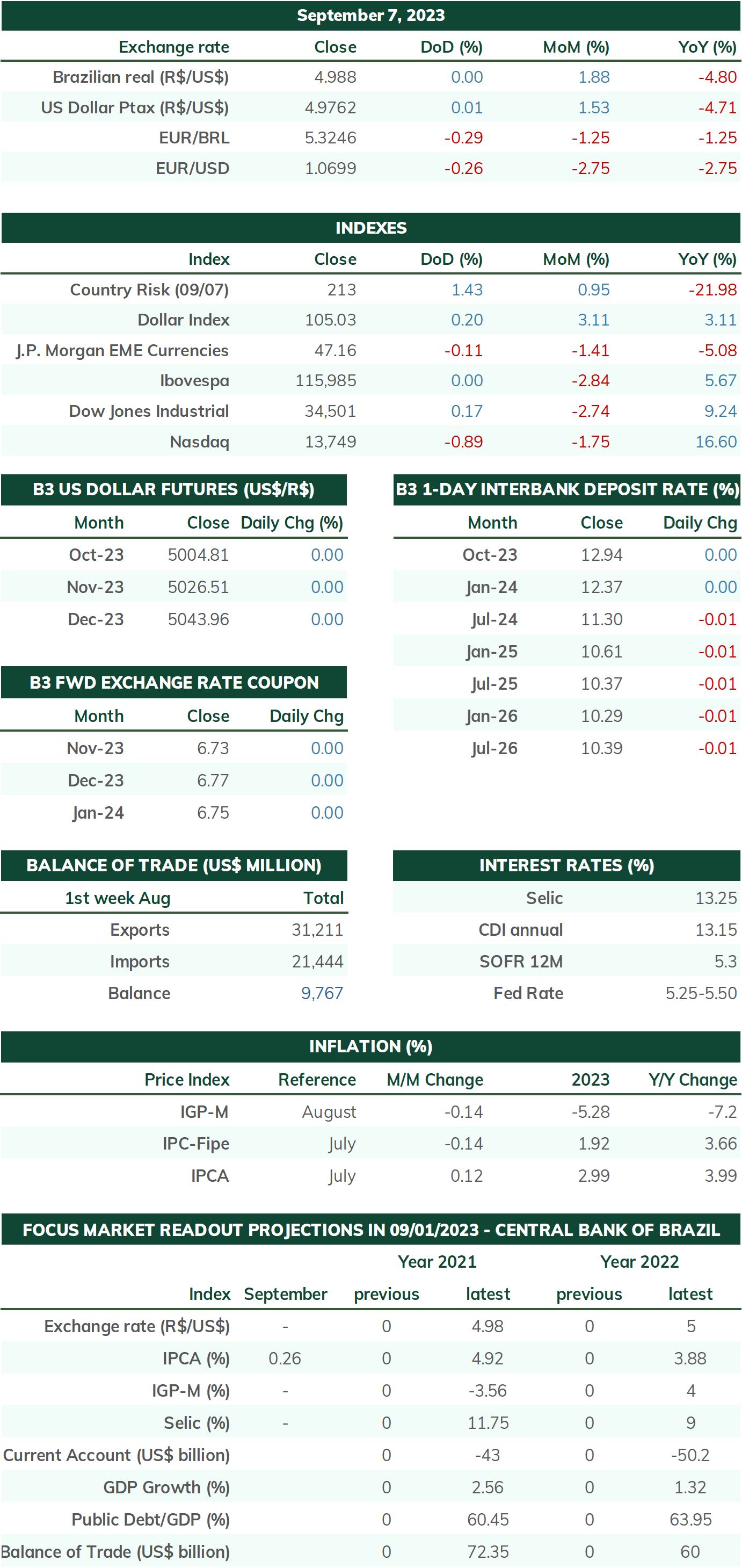
Bullish Factors
-
August CPI in the US is expected to accelerate moderately, reinforcing the perception that the Federal Reserve will maintain a firmer stance on inflation and sustain higher interest rates for longer, strengthening the dollar.
-
Economic data in China and Europe are expected to suggest a slowdown in these economies and could dampen foreign investors' risk appetite, weakening the real.
Bearish Factors
-
August IPCA in Brazil should increase moderately, suggesting that the space for interest rate cuts by the Central Bank may be lower than initially estimated and lower expectations for the fall in the interest differential across the country, contributing to the attraction of financial investments and strengthening the real.

Our Brazil team provides regular weekly coverage of the Brazilian economy and the outlook for the Real, accessible by clicking the link in the banner above.
Week in review
The USDBRL ended the week sharply higher, ending Friday's session (08) quoted at BRL 4.982, a variation of +0.8% in the week, +0.6% in the month and -5.6% in the year. The dollar index closed this Friday's session higher for the eighth consecutive week, quoted at 105.0 points, a weekly gain of 0.8%, a monthly gain of 1.4% and an annual gain of 1.7%. The foreign exchange market reflected the external environment of concern about the economic situation in China and Europe, and the rise in US interest rates after economic activity data released throughout the week reinforced the contrast in performance between these countries.
USDBRL and Dollar Index (points)

Source: StoneX cmdtyView. Design: StoneX
THE MOST IMPORTANT EVENT: Inflation in the United States
Expected impact on USDBRL: bullish
The focus of investors' attention this week should be the release of the US Consumer Price Index (CPI) for August. Between May and July, a significant moderation in US inflation accompanied by strong data for employment and economic growth reinforced expectations that the country can carry out a “soft landing,” a process of price stabilization without a significant slowdown in economic activity and the labor market. In this analysis, the Federal Reserve would not need to raise the country's basic interest rates between 5.25% and 5.50% per year. Still, it would be necessary to keep them at a high level for a long period, as it is confirmed that the disinflation process occurs as expected. Thus, in recent weeks, yields on US Treasuries have continued to advance, particularly on longer maturities.
The August CPI should, at the same time, reinforce the reading of the “soft landing” and bring a point of attention. On the one hand, the median expectation for the growth of the “core” of the indicator, which excludes the volatile components of food and beverages, is only 0.2% in the month, which would represent an annual increase of approximately 2.4%, confirming an interpretation of price moderation. The general index is predicted to increase by 0.6% this month due to a rise in the prices of petroleum products, particularly fuels. This increase warns of new inflationary issues, so the Federal Reserve should take a cautious and vigilant approach to avoid prematurely loosening its monetary policy.
Inflation in Brazil
Expected impact on USDBRL: bearish
This week, the National Broad Consumer Price Index (IPCA) will also be released, which is expected to accelerate from 0.12% in July to something close to 0.3% in August due to the effects of the last readjustment of fuel prices, in addition to the increase in the costs of electricity and new cars. In the mid-month disclosure (IPCA-15), a slightly higher-than-expected reading for consumer prices had a bearish effect on the exchange rate by stopping the boldest bets of cuts to the basic interest rate (Selic), consequently reducing the pace of decline in the Brazilian interest differential compared to other economies and contributing to the attraction of investments in fixed income assets. Given the recent environment of aversion to risky assets due to fears about economic growth in China and Europe and rising yields on US bonds, a slight acceleration in the IPCA may reinforce the reading that the space for interest rate cuts by the Central Bank of Brazil is shrinking and, thus, help strengthen the real.
Interest decision in Europe
Expected impact on USDBRL: undefined
On Thursday (14), the European Central Bank (ECB) will release its monetary policy decision amid doubts about the best path for interest rates in the eurozone. Around 40% of bets on the future interest market believe in a readjustment of 0.25 p.p., while around 60% on maintaining interest rates at the current level of 3.75% p.a. The central bank faces a difficult stalemate. On the one hand, the current level of inflation is still very high. However, it has declined in recent months, and several authorities have reinforced their intention to maintain the monetary tightening cycle to ensure that prices return to the ECB's target. However, several indicators of economic activity suggest that the bloc is likely to face an economic recession later this year, and further interest rate hikes could exacerbate this slowdown. Therefore, it becomes difficult to anticipate the decision of the Monetary Authority and its reception by financial agents can be mixed.
Chinese interest and data
Expected impact on USDBRL: bullish
Once again, the data released throughout the week reinforced the perception that the economic recovery in China after its period of zero tolerance against Covid-19 occurs below what was anticipated by analysts. This week, the reading for industrial production, investment in fixed assets and retail sales, all referring to August, should follow the same trend. In addition, the Central Bank of China announced a decision for its lending rates, which are expected to remain unchanged – the benchmark one-year interest rate was reduced by 0.10 p.p. on August 21, and a further cut is unlikely.
Key Indicators

Sources: Central Bank of Brazil; B3; IBGE; Fipe; FGV; MDIC; IPEA and StoneX cmdtyView.
Analysis by: Leonel Oliveira Mattos ([email protected]), Alan Lima ([email protected]), and Vitor Andrioli ([email protected]). Translation by Rodolfo Abachi ([email protected]).
Financial editor: Paul Walton ([email protected]).




